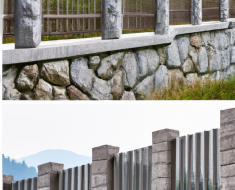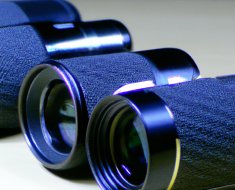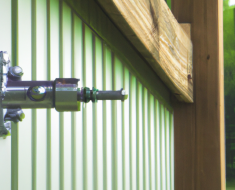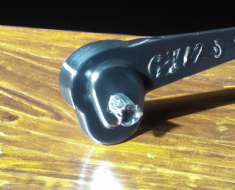“Precision and accuracy in every shot with the perfect offset iron sights.”
Pros and Cons of Different Types of Offset Iron Sights
If you’re a rifle enthusiast looking to enhance your shooting experience, offset iron sights can be a great addition to your setup. These sights provide a secondary aiming option that can come in handy in various shooting scenarios. However, with so many options available on the market, choosing the right offset iron sights for your rifle can be a daunting task. In this article, we’ll explore the pros and cons of different types of offset iron sights to help you make an informed decision.
One of the most common types of offset iron sights is the flip-up design. These sights can be easily folded down when not in use, allowing you to use your primary optic without any interference. When you need to engage targets at close range or if your primary optic fails, you can quickly flip up the iron sights and continue shooting with precision. Flip-up offset iron sights are compact and lightweight, making them a popular choice among shooters who value versatility and convenience.
Another type of offset iron sight is the fixed design. Unlike flip-up sights, fixed offset iron sights are always deployed and ready for use. While this may seem like a disadvantage in terms of bulkiness and potential interference with your primary optic, fixed offset iron sights offer unmatched durability and reliability. They are less prone to mechanical failures since there are no moving parts that could break or malfunction. If you prioritize ruggedness and simplicity in your gear, fixed offset iron sights might be the right choice for you.
When it comes to adjustability, some offset iron sights offer windage and elevation adjustments to fine-tune your aiming point. This feature can be particularly useful when zeroing your rifle or compensating for environmental factors such as wind or elevation changes. Adjustable offset iron sights allow you to make precise adjustments on the fly without having to rely on tools or additional accessories. However, keep in mind that adjustable sights may require more maintenance and calibration compared to non-adjustable options.
On the other hand, non-adjustable offset iron sights are simpler in design and operation. These sights are set at a fixed point of aim and cannot be adjusted for windage or elevation changes. While this may seem limiting in terms of versatility, non-adjustable offset iron sights are generally more reliable and robust since there are fewer components that could potentially fail or become misaligned. If you prefer a set-it-and-forget-it approach to your gear, non-adjustable offset iron sights might be a better fit for your shooting style.
In conclusion, choosing the right offset iron sights for your rifle ultimately depends on your personal preferences and shooting needs. Flip-up sights offer convenience and compactness, while fixed sights provide unmatched durability and reliability. Adjustable sights allow for precise adjustments, while non-adjustable sights are simpler and more straightforward to use. Consider what features are most important to you and select offset iron sights that align with your shooting style and requirements. With the right choice of offset iron sights, you can enhance your shooting capabilities and enjoy improved accuracy in various shooting scenarios.
How to Properly Mount Offset Iron Sights on Your Rifle
Offset iron sights are a popular choice for many rifle owners who want to have a backup sighting system in case their primary optic fails. These sights are mounted at a 45-degree angle to the rifle’s bore, allowing shooters to quickly switch between their primary optic and iron sights without having to remove or adjust anything on the rifle.
When it comes to choosing the right offset iron sights for your rifle, there are a few key factors to consider. The first thing you’ll want to think about is the type of rifle you have and how you plan on using it. Different rifles may require different types of offset sights, so it’s important to do your research and make sure you’re getting the right ones for your specific needs.
Another important factor to consider when choosing offset iron sights is the type of shooting you’ll be doing. If you’re primarily using your rifle for close-quarters combat or tactical applications, you may want to opt for offset sights that are designed for quick target acquisition and rapid engagement. On the other hand, if you’re more of a precision shooter who values accuracy over speed, you may want to choose offset sights that offer finer adjustments for long-range shooting.
Once you’ve chosen the right offset iron sights for your rifle, the next step is properly mounting them. Mounting offset sights can be a bit tricky, but with some patience and practice, you should be able to get them installed correctly in no time.
The first thing you’ll want to do is make sure your rifle is unloaded and safe to work on. Once you’ve done that, you can start by removing any existing optics or accessories from your rifle’s rail system. This will give you a clear workspace to mount your offset sights.
Next, you’ll want to attach the offset sights to your rifle’s rail system at a 45-degree angle. Most offset sights come with mounting hardware that makes this process relatively easy, but it’s important to make sure they’re securely attached before moving on.
Once your offset sights are mounted, it’s time to zero them in. This process will vary depending on the type of offset sights you have, but generally involves adjusting windage and elevation settings until your shots are hitting where you want them to.
It’s important to remember that zeroing in offset iron sights can take some time and patience, so don’t get discouraged if it doesn’t happen right away. With some practice and persistence, you should be able to get your offset sights dialed in and ready for action.
In conclusion, choosing the right offset iron sights for your rifle is an important decision that can have a big impact on your shooting performance. By considering factors like the type of rifle you have, how you plan on using it, and the type of shooting you’ll be doing, you can ensure that you’re getting the right offset sights for your specific needs. And by following proper mounting procedures and taking the time to zero them in correctly, you can make sure that your offset iron sights are ready to go when you need them most.
Factors to Consider When Choosing Offset Iron Sights
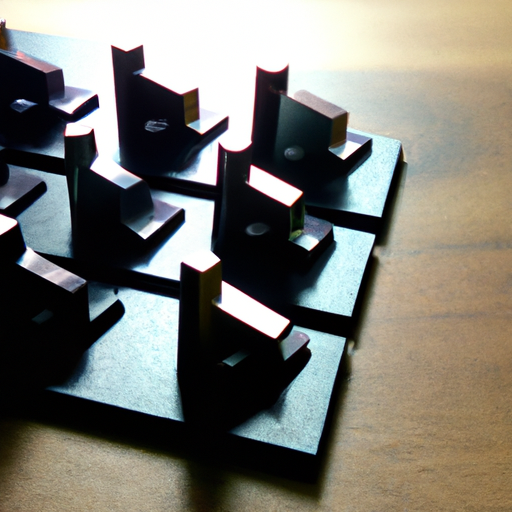
When it comes to choosing the right offset iron sights for your rifle, there are a few factors to consider in order to make an informed decision. Offset iron sights are a popular choice for many gun owners because they provide a reliable backup option in case your primary optics fail. They are also useful for close-range shooting where using traditional optics may not be practical. In this article, we will discuss some important factors to consider when selecting offset iron sights for your rifle.
One of the first things to consider when choosing offset iron sights is the type of rifle you have. Different rifles have different mounting options, so it’s important to choose offset iron sights that are compatible with your specific firearm. Make sure to do your research and select sights that are designed to fit your rifle’s rail system or mounting platform.
Another important factor to consider is the material and construction of the offset iron sights. Look for sights that are made from high-quality materials such as aluminum or steel, as they will be more durable and long-lasting. You want offset iron sights that can withstand the rigors of regular use and hold up well in various weather conditions.
Additionally, consider the sight picture provided by the offset iron sights. Look for sights that offer a clear and crisp sight picture, as this will help you quickly acquire targets and make accurate shots. Some offset iron sights come with adjustable features such as windage and elevation adjustments, which can be useful for fine-tuning your aim.
It’s also important to consider the overall size and weight of the offset iron sights. You want sights that are compact and lightweight, so they won’t add unnecessary bulk or weight to your rifle. This is especially important if you plan on carrying your rifle for extended periods or using it in dynamic shooting situations.
When choosing offset iron sights, think about how you plan to use them. Are you looking for backup sights for close-range shooting, or do you need them for longer-range engagements? Consider the type of shooting you will be doing most often and choose offset iron sights that are best suited for those scenarios.
Lastly, consider your budget when selecting offset iron sights. There are a wide range of options available on the market, with prices varying depending on the brand, features, and quality of the sights. Set a budget and stick to it, but also keep in mind that investing in a high-quality set of offset iron sights is worth it in the long run.
In conclusion, choosing the right offset iron sights for your rifle requires careful consideration of several factors. Make sure to choose sights that are compatible with your rifle, made from durable materials, offer a clear sight picture, and are compact and lightweight. Consider how you plan to use the sights and set a budget that aligns with your needs and preferences. By taking these factors into account, you can select offset iron sights that enhance your shooting experience and provide reliable backup options in case of optic failure.
Best Offset Iron Sights for Different Types of Rifles
Choosing the right offset iron sights for your rifle can be a daunting task, especially with the wide variety of options available on the market. Offset iron sights are a popular choice among shooters who want a reliable backup sighting system that can be used in conjunction with a primary optic or as a standalone sight. In this article, we will discuss some of the best offset iron sights for different types of rifles to help you make an informed decision.
When it comes to choosing offset iron sights for your rifle, one of the most important factors to consider is compatibility. Not all offset iron sights are designed to fit all rifles, so it’s essential to make sure that the sights you choose are compatible with your specific firearm. Additionally, you’ll want to consider factors such as sight radius, height over bore, and ease of adjustment when selecting offset iron sights for your rifle.
For AR-15 rifles, one of the best offset iron sights on the market is the Magpul MBUS Pro Offset Sight Set. These sights are lightweight, durable, and easy to adjust, making them an excellent choice for shooters who demand precision and reliability from their equipment. The low-profile design of these sights allows them to fold flat against the rail when not in use, making them ideal for use with a primary optic.
If you own an AK-47 or similar rifle, the UTG Low Profile Flip-up Rear Sight is a great option for offset iron sights. These sights feature a dual-aperture design for quick and easy target acquisition, as well as windage and elevation adjustments for precise zeroing. The low-profile design of these sights ensures that they won’t interfere with your primary optic or other accessories mounted on your rifle.
For bolt-action rifles, such as the Remington 700 or Savage 10/110 series, the GG&G Offset Iron Sights are an excellent choice. These sights feature a rugged construction and a spring-loaded flip-up design for quick deployment when needed. The windage and elevation adjustments on these sights are precise and easy to use, making them an ideal backup sighting system for long-range shooting.
No matter what type of rifle you own, it’s essential to choose offset iron sights that are durable and reliable. Look for sights made from high-quality materials, such as aircraft-grade aluminum or steel, that can withstand the rigors of regular use in the field. Additionally, consider factors such as ease of installation and compatibility with other accessories on your rifle when selecting offset iron sights.
In conclusion, choosing the right offset iron sights for your rifle is crucial to ensuring that you have a reliable backup sighting system that can be used in conjunction with a primary optic or as a standalone sight. By considering factors such as compatibility, durability, and ease of adjustment, you can select offset iron sights that will enhance your shooting experience and improve your accuracy on the range or in the field. Whether you own an AR-15, AK-47, bolt-action rifle, or another type of firearm, there are offset iron sights available that will meet your needs and help you achieve better results with your shooting.
Tips for Zeroing Your Offset Iron Sights
When it comes to choosing the right offset iron sights for your rifle, there are a few key factors to consider. Offset iron sights are a popular choice for many shooters because they provide a reliable backup option in case their primary optic fails. However, with so many options on the market, it can be overwhelming to decide which ones are best for your specific needs.
One of the first things to consider when choosing offset iron sights is the type of rifle you will be using them on. Different rifles have different mounting options, so it’s important to make sure that the offset sights you choose are compatible with your firearm. Some offset sights are designed specifically for AR-15 style rifles, while others may be more versatile and work with a variety of firearms.
Another important factor to consider is the type of shooting you will be doing. If you plan on using your offset iron sights for close-quarters combat or fast-paced shooting scenarios, you may want to opt for sights that offer quick target acquisition and easy adjustment. On the other hand, if you will be shooting at longer distances or need more precision, you may want to choose offset sights that offer finer adjustments and increased accuracy.
It’s also important to consider the quality and durability of the offset iron sights you choose. Look for sights that are made from high-quality materials and have a reputation for being reliable and long-lasting. You don’t want to skimp on quality when it comes to something as important as your backup sighting system.
Once you’ve chosen the right offset iron sights for your rifle, the next step is to zero them in properly. Zeroing your offset sights is crucial to ensure that they are accurate and reliable in case you need to use them in a pinch. Here are some tips for zeroing your offset iron sights:
1. Start by mounting your offset iron sights on your rifle according to the manufacturer’s instructions. Make sure they are securely attached and properly aligned with your primary optic.
2. Before zeroing in your offset sights, make sure that your primary optic is zeroed in first. This will provide a solid reference point for adjusting your offset sights.
3. Choose a target at an appropriate distance for zeroing in your offset iron sights. A distance of 25-50 yards is typically a good starting point for most shooters.
4. Take a few shots with your primary optic to confirm that it is still zeroed in. Once you have confirmed this, switch to your offset iron sights and take a few shots at the target.
5. Adjust the windage and elevation settings on your offset sights as needed until your shots are hitting where you want them to. It may take some trial and error to get them dialed in perfectly, so be patient and make small adjustments as needed.
6. Once you have zeroed in your offset iron sights, take some time to practice shooting with them to ensure that you are comfortable using them as a backup option.
By following these tips for choosing and zeroing in your offset iron sights, you can ensure that you have a reliable backup sighting system in place for when you need it most. Remember to practice regularly with your offset sights to maintain proficiency and confidence in their use. With the right equipment and proper technique, you can be prepared for any situation that may arise while out on the range or in the field.




